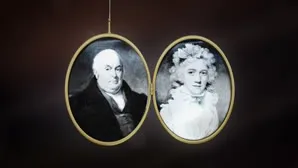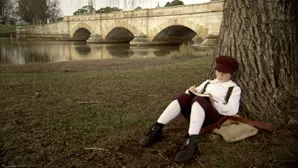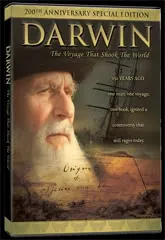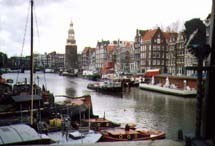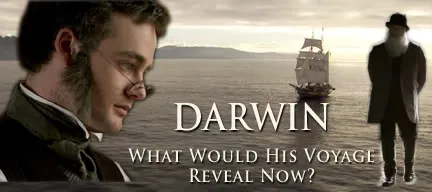
Parson or Pagan?
Unwrapping Darwin’s Religious Roots
Somewhere in the last 200 years, it became popular thinking that Charles Darwin was an atheist. His entire life of research has been discarded by some groups who have labeled the scientist as being anti-God, while in actuality, his academic pursuits at Cambridge University began at Christ’s College, where he was studying for the clergy. When Capt. Robert FitzRoy invited Charles Darwin to join the second South American tour of the H.M.S. Beagle, Darwin’s father and sisters feared this would disrupt his career plans in the church.Reluctantly, Darwin’s father was persuaded to let him go on the voyage and the result would change the direction of his life.
Looking back at the culture of the times in the early 1800’s, the clergy was a respectable path for a gentleman with an interest in natural history. His father feared that Darwin’s broad fascination with geology and natural studies would lead him down the path of an idle gentleman, so he encouraged Charles to align these interests with
those of God and pursue a life as a country parson, where he could enjoy a quiet life of ministry, all while studying the flora and fauna.
Darwin pursued the clergy path despite the influence of his grandfathers, Erasmus Darwin and Josiah Wedgewood, who were both free thinking rationalists and humanists, challenging popular thought on philosophy, politics, religion and science. Passages from Erasmus Darwin’s Zoonomia. ..or the Laws of Organic Life are recorded throughout the younger Darwin’s journals over the years. He entered into his studies as he had his whole life, asking questions.
His curious nature led him into the interest of two men at Cambridge who had the greatest impact on the course of his life. Darwin’s private tutor in math and theology, Rev. John D. Henslow encouraged Darwin as a man of great potential and strongly influenced his hire on the Beagle voyage, agreeing with Professor Adam Sedgwick, a renowned geologist who had tutored Darwin in geological exploration in an 1831 tour of North Wales. Darwin’s tutelage under these two experts had a profound influence upon his confidence as a scientist and the impact of his discoveries on the Beagle voyage. Two books further instilled in Darwin a thirst for science: Sir John Herschel’s Preliminary Discourse on the Study of Natural Philosophy and Alexander von Humbolt’s Personal Narrative of the Travels to the Equinoctial Regions of America During the Years 1799-1804.
When he set out on the Beagle after his graduation from Cambridge at the age of 22, there was one additional book that became the rudder for every observation he made on the journey. Charles Lyell’s Principles of Geology, a gift from Beagle’s Capt. FitzRoy, proposed a uniformitarian point of view that sought, in Lyell’s language, “to free science from Moses.” In the church, Darwin was taught that God made the world exactly the way we see it now without taking adaptation into account; however, the changes in species over time that Darwin observed on his voyage proved the church’s point of view to be wrong. If the account of creation in Genesis ran counter to his theory, how could the rest of the Bible be true?
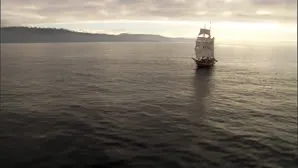
When the H.M.S. Beagle journey began, Darwin’s religious orientation was clearly from a biblical point of view. By the end of his journey, though, he viewed the events of the Bible as more allegory than history. No one can be certain what caused his beliefs to evolve over the course of his journey. Some thought his exposure to the cruelties of slavery on the voyage caused him to question how God could allow such suffering. Others speculated that his observations about adaptation conflicted with the church’s view of the fixity of the human species as God’s perfect creation to a degree that he had to choose sides. His commitment to becoming a parson faded away.
While it is true that his research caused him to question God’s role in the origin of life, at the time he wrote Origin of the Species his belief in the concept of God remained in an intelligent “first cause” of life. It was later in life, following the death
of three of his children (he was especially close to his children for a father in his day), that he started calling himself an agnostic. Is it possible that a misguided view of absolute truth led him to discard his faith altogether? Or was his faith in science stronger than his faith in God. Are the two mutually exclusive?
A new film called Darwin: The Voyage that Shook the World examines Darwin’s noted discoveries on board The Beagle in the light of new research in the span of time since that voyage. One hundred and fifty years after The Origin of Species was published, scientists have made discoveries that would cause Darwin to once again stop and ask questions.
Punta Alta
In 1833, Darwin discovered the fossil remains of nine species that he believed to have died elsewhere, transported to the region by water. Giant fossil footprints discovered recently by South American geologist Dr. Emil Silvestru, suggest that animals already living in the region died trying to escape something happening in that flood plain. With this information, would Darwin still believe that the changes in the region took place over a period of centuries?
Puerto Santa Cruz
Darwin thought he found remains of an ancient sea channel in Argentina formed by the ocean rising and lowering over eons, cutting a wide river valley through the continent, from coast to coast. He convinced the ship’s team to travel upstream, only to be cut off 140 miles into their journey.

If he had reached the river’s source, Darwin would have discovered the Perito Moreno Glacier. The 97-square mile ice formation was many times its current size during the great Patagonian glaciations and capable of releasing enough melted water to cut a valley like the Santa Cruz channel, 200 miles wide, in a single event. Darwin’s views of geology changing over time did not leave much room for such catastrophes. How would his theory respond to this possibility if he could fly over the Perito Moreno today?
Tiera Del Fuego
Professor Stuart Burges of Bristol University poses that any scientist interpreting empirical data looks at that data with preconceived ideas, assumptions and world views that impact the conclusion. In 1834, Europeans were growing suspicious that non-white races did not possess the moral or mental ability to be elevated to civilized status.
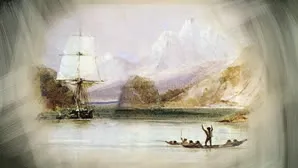
Of course, today, this would be interpreted as racism, but in Darwin’s time it was serious science. On Darwin’s voyage, he befriended Jimmy Button, an indigenous Fuegian who traveled to England to become “civilized” and was transported back to Tiera Del Fuego to teach his people the benefits of civilization. When Darwin later visited his old friend, he found they had reverted to “savagery.” Nothing of the English gentleman remained. This observation caused Darwin to question the biblical view that all people descended from Adam and Eve. In his mind, these people had fallen back to a lower state of species. Today, this point of view would be easily refuted, but in Darwin’s day it was a serious scientific conclusion that certain people were “stuck” at an earlier state of evolution.
Coquimbo Region, Chile
By the time the Beagle reached Chile, Darwin’s devotion to Lyell’s theories was seriously challenged. He had started to compare Lyell’s conclusions with his own and rate them. Was he going to follow the idea or the evidence? Lyell believed in the fixity of continents, which required a slow vertical movement. Geologists say that in order to explain the folds and buckling of high mountain regions, you need lateral movement.
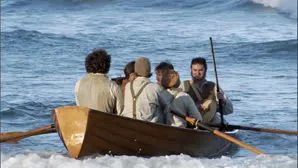
Today, according to plate tectonics there is a process known as underplating, where there is an injection of magma from the mantle lifting the continents quickly, like earthquakes, creating sudden jolts. Darwin’s firsthand experience of an earthquake in Chile revealed a marked difference between shifts on the islands and shifts on the mainland. That evidence ran counter to his model, so he decided not to use the idea that earthquakes could be the cause of regional uplift. Ocean floor fossils found 150 feet above sea level by current day explorers should be fossilized or decomposed according to Lyell’s theory. This evidence shows the land that was at the bottom of the sea had been uplifted. What would Darwin conclude if he could hold one of those seashells in his hand today?
Uspallata, Argentina
By the time the Beagle had reached Uspallata, Darwin had read three volumes of Lyell and the deep time theory affected his whole thinking. He found the cast of a fossilized tree that he believed to have grown there, buried as the land sank into the ocean. Recent expeditions in the same region unveiled one fossil showing the lower end of a tree. If the tree had grown in that region, there should have been a thick layer of soil and a sign of roots that have rotted over time. The rootless fossil suggests the tree was broken and carried by moving water and sunk rapidly, fossilized by a rapid, catastrophic event.
Galapagos
Darwin spent the last five weeks of his research on the Galapagos Islands, where he collected samples and species from the various islands.
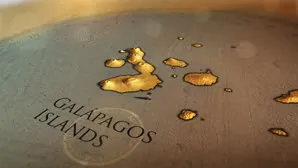
Contrary to popular thought, Darwin’s theory of natural selection was not developed on the islands, but largely as a result of the evidence he collected on the islands and took home to England for examination. Because he was locked in the point of view that certain species were created in certain fixed places, he missed vital information. Darwin didn’t record which islands the specimens were collected from. It was on discussions arising from this evidence that Darwin was allowed his first theoretical viewpoint.
A belief in Noah’s ark requires the belief that species can disperse and adapt, which Darwin was seeing all over the Galapagos based on variations in mockingbirds. Yet in his mind, creation was proven wrong because of the church’s fixation at the time that all of creation was fixed and unchanging. The Bible teaching of the day was that God made the world exactly as it is with no variation.
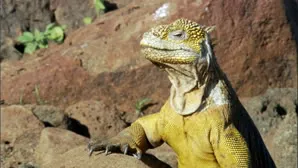
This, coupled with a popular intellectual disdain for miracles led Darwin to arrive at the conclusion that if a creator God did exist, a world of suffering and cruelty was proof that He must have abandoned His creation. His attempt to join Lyell in freeing science from the Bible led to the study of hybridization. The definition of a new species is one that will not breed or mate with another species. Darwin had concluded that different types of ground finches have hybridized, but recent research has revealed the hybridization of a land iguana and a marine iguana, each with unique habitats and habits. Darwin’s theory calls for small changes that happen over time, but the population explosion of marine iguanas on the Galapagos suggest that the islands might be younger than estimated, in the realm of thousands of years.
Life Devoted to Research
At home in England while he was away, Darwin’s observations on the Beagle’s voyage were being published and widely distributed. He came home a hero, married, and settled into a life of writing and research in defense of this radical theory that man was not created in God’s image, but descendants of animals. His theory, built on his observations overseas and at home upon the death of three of his children, was built on the fact that the unfit would die and the strong would survive.

His own grief and the stress of disputing opponents of his ideas held him back from publishing any conclusions, until an essay on natural selection by Charles Russell Wallace ignited a response. Fifteen months later, On the Origin of Species was published. A lot of his book phrases his discoveries as an invitation to view things another way, but despite much controversy, Darwin spent the rest of his life defending his theory.
What factors in his life – the influence of his freethinking grandfathers, his mother’s Unitarian faith, the Church of England and culture of the time, the personal trauma of losing three children – affected his view of God (and the biblical account of creation) as he was drawing the major conclusions of his theory?
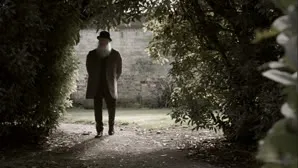
What factors of his human nature spurred Darwin to accelerate his conclusions prematurely because of Wallace’s competitive essay? If Charles Darwin held a microscope today, if he could see the structure and complexity if a cell, if he could examine a strand of DNA, how would that affect his belief in random events? These questions, what evolutionists today call “research problems,” are stacking up. Darwin’s defenders would say his evidence is stacking up quite well on its own. But there remains one question: What about the origin of life itself? In the end, Darwin’s efforts to free science from the bible have only proved that they are inseparably linked. Is Darwin’s life’s research really about the evolution of man or the existence of God?
—————————————————————————————-
This article is drawn from the facts presented in the DVD: DARWIN – The Voyage That Shook The World released by Exploration Films.
In this expansive documentary the HMS Beagle once again sets sail as it retraces Charles Darwin’s voyage in lavish detail, examining his findings and remarkable conclusions and their implications in the light of modern knowledge.
Filmed in South America, United Kingdom, North America, Australia and Europe, Darwin – The Voyage That Shoot The World features dramatic period recreations and stunning nature cinematography, all interwoven with scholars, scientists and Darwin experts who share differing perspectives on the man and the controversy he stirred.
